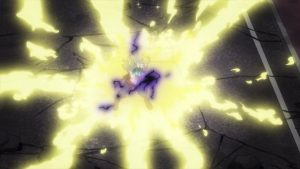 This episode of Boku no Hero Academia (and the last one too, really) is living proof that anime episodes don’t exist in a vacuum. And the same applies to any narrative fiction that attempts continuity. Looking at these last two eps individually, I would be hard-pressed to think of anything I’d change. They were brilliantly executed and deserve copious praise for that. But – for me at least – they don’t quite sing like the very best episodes of this series do. And the reason they’re one step below the top tier has nothing to do with what happened in the eps themselves, and everything with what led up to them.
This episode of Boku no Hero Academia (and the last one too, really) is living proof that anime episodes don’t exist in a vacuum. And the same applies to any narrative fiction that attempts continuity. Looking at these last two eps individually, I would be hard-pressed to think of anything I’d change. They were brilliantly executed and deserve copious praise for that. But – for me at least – they don’t quite sing like the very best episodes of this series do. And the reason they’re one step below the top tier has nothing to do with what happened in the eps themselves, and everything with what led up to them.
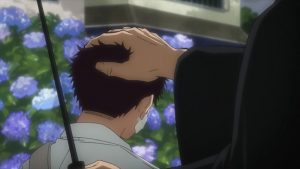 Needless to say, it was a bit of a struggle to hold my tongue after reading some of the comments last week. I’m not sure the criticism of Horikoshi that there are no consequences in this series is necessarily fair in the first place. I mean, every major arc has seen some meaningfully major characters fucked up in some way, but more than that – Toshinori is living proof that there are consequences in this mythology. Look at what he is now and what he was, and tell me there are no consequences for those who live to do good for others. But that point really became moot with what happened this week.
Needless to say, it was a bit of a struggle to hold my tongue after reading some of the comments last week. I’m not sure the criticism of Horikoshi that there are no consequences in this series is necessarily fair in the first place. I mean, every major arc has seen some meaningfully major characters fucked up in some way, but more than that – Toshinori is living proof that there are consequences in this mythology. Look at what he is now and what he was, and tell me there are no consequences for those who live to do good for others. But that point really became moot with what happened this week.
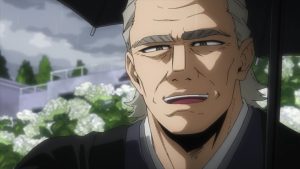 We might have been seeing Midorioya’s name on the casualty list (not likely of course, given that he’s the narrative hero) had Aizawa-sensei not been brought to the surface in the nick of time. The nature of Eri’s quirk makes Eraser and his even more crucial – he’s literally the only one who can stop her from going out of control and wreaking devastation with Rewind. Frankly I think some of the criticism of her as a plot device is overwrought. Yes, Rewind is – in theory – a pretty game-changing power. But right now it’s nothing more than a biohazard, because she can’t control it and there are no signs that will change anytime soon. I also find it odd that people are making assumptions about what Rewind can and can’t do, when the scope – and limits – of Eri’s ability haven’t been fully explored.
We might have been seeing Midorioya’s name on the casualty list (not likely of course, given that he’s the narrative hero) had Aizawa-sensei not been brought to the surface in the nick of time. The nature of Eri’s quirk makes Eraser and his even more crucial – he’s literally the only one who can stop her from going out of control and wreaking devastation with Rewind. Frankly I think some of the criticism of her as a plot device is overwrought. Yes, Rewind is – in theory – a pretty game-changing power. But right now it’s nothing more than a biohazard, because she can’t control it and there are no signs that will change anytime soon. I also find it odd that people are making assumptions about what Rewind can and can’t do, when the scope – and limits – of Eri’s ability haven’t been fully explored.
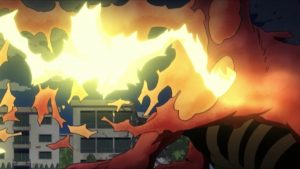 That said, one of the interesting questions posed by this arc’s denouement is just how Deku managed to make Nighteye’s Foresight a lie. I initially wondered (and I still don’t think it’s been disproven) whether Rewind had the power to cancel out Foresight – to change the future in ways Nighteye couldn’t see. But on his deathbed Nighteye speculates that it’s “energy” – not Izuku’s specifically, maybe, but that of everyone who’d been fighting with him channeling itself through that terrier body. That’s rather poetic but I’m not quite sure how it makes actual sense – for now, this one is still a mystery. And given All Might’s role in all this, a mystery that’s absolutely at the heart of Boku no Hero Academia.
That said, one of the interesting questions posed by this arc’s denouement is just how Deku managed to make Nighteye’s Foresight a lie. I initially wondered (and I still don’t think it’s been disproven) whether Rewind had the power to cancel out Foresight – to change the future in ways Nighteye couldn’t see. But on his deathbed Nighteye speculates that it’s “energy” – not Izuku’s specifically, maybe, but that of everyone who’d been fighting with him channeling itself through that terrier body. That’s rather poetic but I’m not quite sure how it makes actual sense – for now, this one is still a mystery. And given All Might’s role in all this, a mystery that’s absolutely at the heart of Boku no Hero Academia.
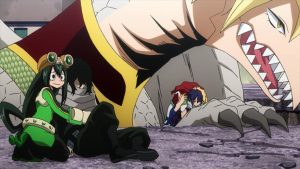 Nighteye’s death was certainly gut-wrenching. And the way it played out, with his vitals slowly ticking down on the monitor just barely in shot, was quite chilling. But if any one element of this episode was robbed of potential greatness by the shortcomings of “Shie Hassaikai’s” buildup, it was Nighteye’s death. In an arc needing more of it he was pathos galore, the most compelling part of the story. I’m glad Toshinori came to his bedside in the end, but the weight of regret that poor man has to carry with him is growing heavier all the time, and he no longer has the hero’s body to support it gracefully. I would be worried for Toshinori’s future, even if Sir Nighteye’s Foresight had never happened.
Nighteye’s death was certainly gut-wrenching. And the way it played out, with his vitals slowly ticking down on the monitor just barely in shot, was quite chilling. But if any one element of this episode was robbed of potential greatness by the shortcomings of “Shie Hassaikai’s” buildup, it was Nighteye’s death. In an arc needing more of it he was pathos galore, the most compelling part of the story. I’m glad Toshinori came to his bedside in the end, but the weight of regret that poor man has to carry with him is growing heavier all the time, and he no longer has the hero’s body to support it gracefully. I would be worried for Toshinori’s future, even if Sir Nighteye’s Foresight had never happened.
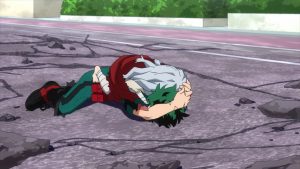 Now, the focus turns back to the real threat all along – the League of Villains. As antagonists Overhaul and Shie Hassaikai never quite measured up to the League or certainly Stain – Chisaki was basically a mobster with delusions of grandeur. If he’d gotten some of the development he got late in the arc near the beginning he would have been a more commanding presence. But Shigaraki is and always was the far greater figure, even if there are rumblings of discontent in his organization too (having absorbed the mantle of Stain, those loyal to him can plainly see that the League isn’t exactly living out his ideals).
Now, the focus turns back to the real threat all along – the League of Villains. As antagonists Overhaul and Shie Hassaikai never quite measured up to the League or certainly Stain – Chisaki was basically a mobster with delusions of grandeur. If he’d gotten some of the development he got late in the arc near the beginning he would have been a more commanding presence. But Shigaraki is and always was the far greater figure, even if there are rumblings of discontent in his organization too (having absorbed the mantle of Stain, those loyal to him can plainly see that the League isn’t exactly living out his ideals).
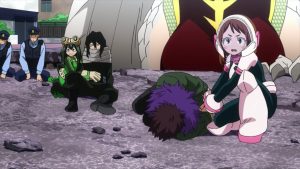 With the League about to go on the offensive it’s not as if the good guys have a lot of time to rest, but boy, they could sure use one. Many have suffered major injuries and Mirio is quirkless thanks to Chisaki’s misuse of Eri’s power. And Nighteye’s death is a major emotional blow not just to All Might but to Mirio too. And even Deku, who for all the pain and injury he’s seen and suffered himself, has yet to suffer the death of someone this close to him. There are consequences to living the life he’s chosen to lead – but then, there always have been.
With the League about to go on the offensive it’s not as if the good guys have a lot of time to rest, but boy, they could sure use one. Many have suffered major injuries and Mirio is quirkless thanks to Chisaki’s misuse of Eri’s power. And Nighteye’s death is a major emotional blow not just to All Might but to Mirio too. And even Deku, who for all the pain and injury he’s seen and suffered himself, has yet to suffer the death of someone this close to him. There are consequences to living the life he’s chosen to lead – but then, there always have been.


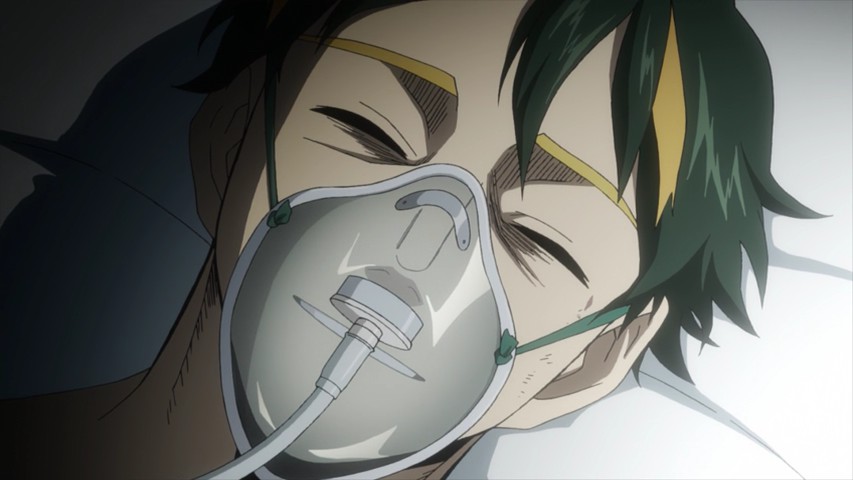
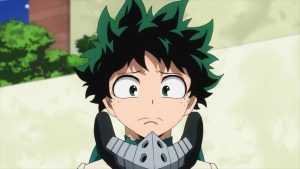
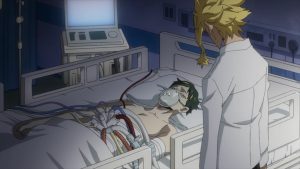
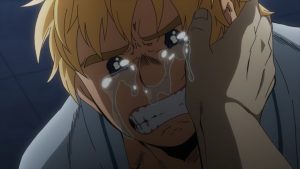
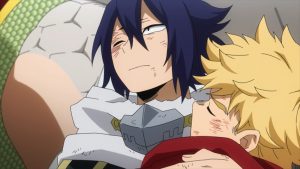
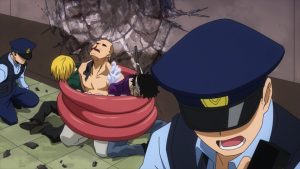
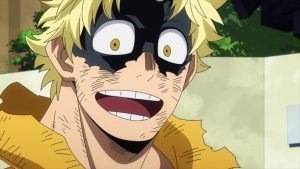

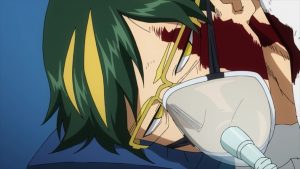
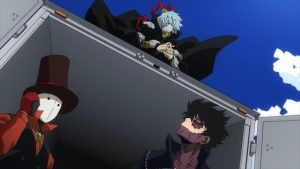
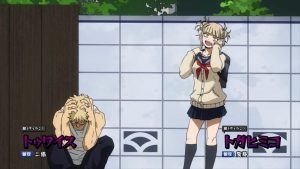


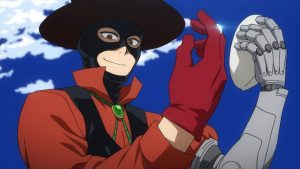

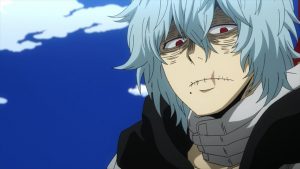
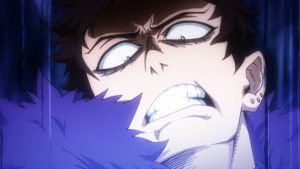
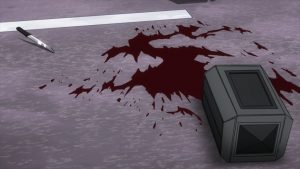
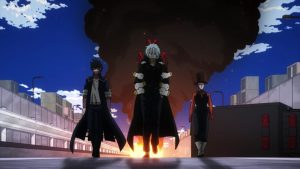
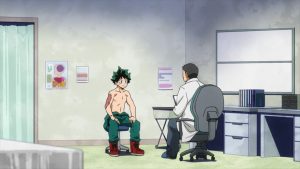
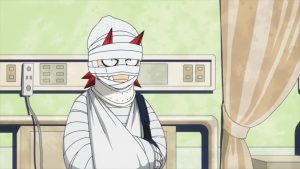
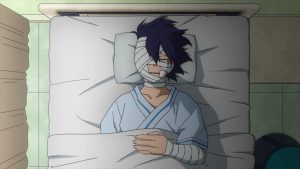
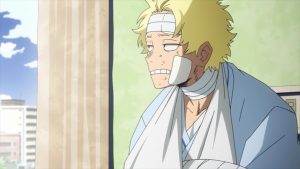

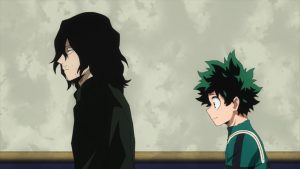

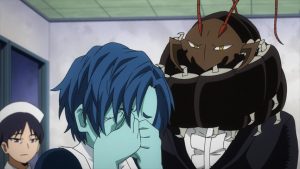
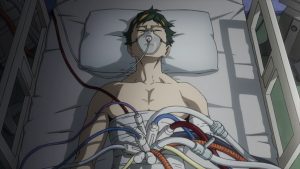
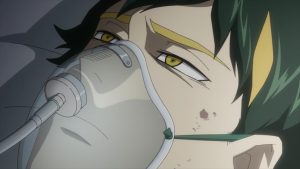
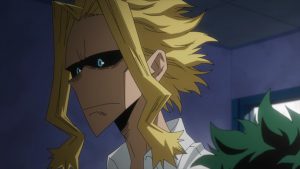

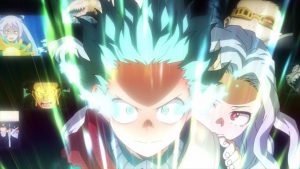
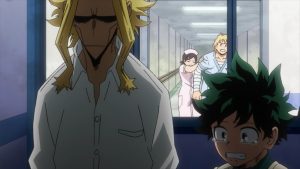
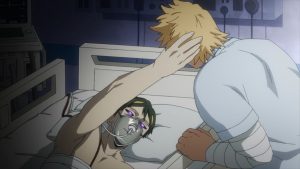
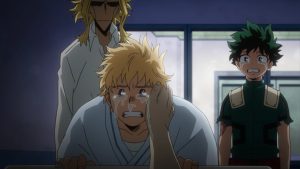
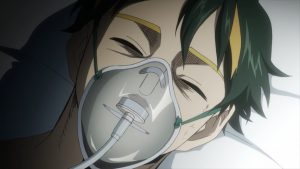


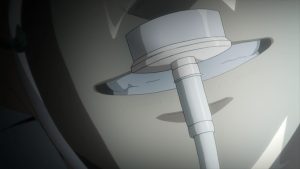

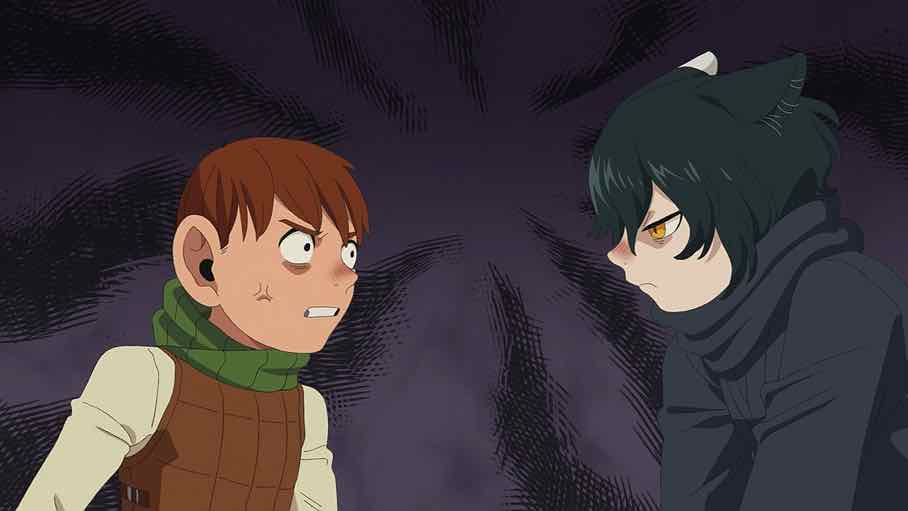
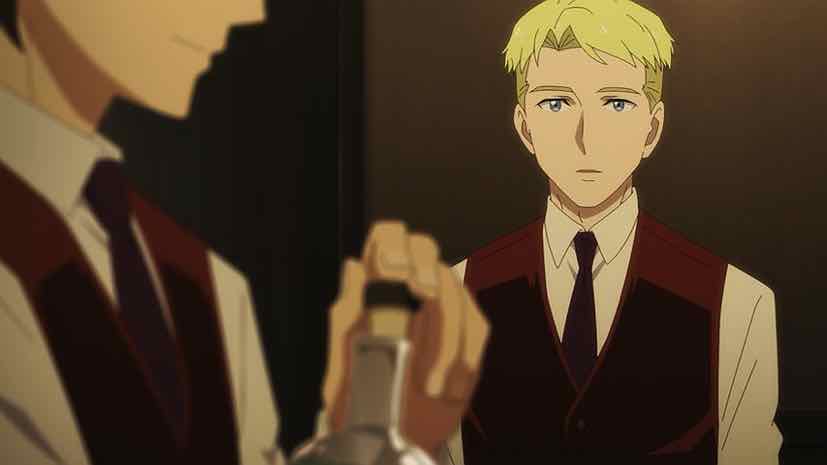
Marty
January 19, 2020 at 9:47 amRegardless of any criticisms regarding Horokoshi’s storytelling, no one should receive death threats for just writing a story the way they want to write it.
Guardian Enzo
January 19, 2020 at 11:22 amObviously not. Did that happen?
Marty
January 19, 2020 at 4:32 pmWithout spoiling anything that happened in the actual chapter, Some Tumblr posts in reaction to Chapter 190 were death threats to Horikoshi over the chapter’s contents. Obviously not serious death threats, but any wish of death upon an individual is pretty sick regardless.
Guardian Enzo
January 19, 2020 at 4:51 pmWe can’t assume anything isn’t a serious threat after KyoAni.
dc22
January 19, 2020 at 10:30 pmWell like you said, the problem was the build up. I don’t think all the complaints are baseless.
blargnobia
January 20, 2020 at 4:31 amThis arc… it’s not like it was bad or anything, but it just felt off.
Part of the problem is that Deku and Mirio had the same goal/internal conflict, so Deku vs Overhaul was — in spirit, at least — a less interesting repeat of Mirio vs Overhaul.
I was really invested in Mirio’s fight because I thought it was going to end in tragedy. OH was hyped as a one-hit-kill villain, so the fight had high stakes. Those high stakes made Mirio’s desperation to save Eri that much more palpable, his loss his quirk that much more tragic, and his tenacity that much more inspirational. I felt it when he first punched OH after losing his quirk.
By comparison, Deku’s fight with this-isn’t-even-my-final-form felt kinda tacked on. Like it was just fanservice because Deku is the main character, so he has to beat the big bad. It didn’t help that Deku had no personal connection with OH. (I mean, neither did Mirio, but he pissed Overhaul off so much that the fight seemed oddly personal by the end.)
Stöt
January 20, 2020 at 8:23 amI loved seeing Mirio vs Overhaul animated, as well as the 100% OFA animation stuff. Had to watch the last three episodes twice, every week, but I agree with some of the criticism. The author could have spent some more time polishing, and reorganising. The women in this arc were largely absent, which feels like a step backwards from the otherwise pretty good characterisation. Froppy and Uraraka, and (perhaps most disappointingly) the lone female of the “big three” all looked like amateurs.
Or maybe I’ve just been blind to the fact that women were always going to be side characters in this story. Never the main villain, never a serious rival, rarely a mentor, never a meaningful romantic relationship. Sigh.
Passa
January 21, 2020 at 2:48 amAnyone can correct me if I’m wrong but Shobuen is not the “anime genre” you flock to for females to be major players (maybe Sakura in Naruto?). And I’ll say something controversial, not every story told needs to have both sexes represented.
As for my concerns about the story, I’m pleasantly surprised to be wrong about the story’s direction regarding Nighteye and possibly zero. Though I still have my eye on her…